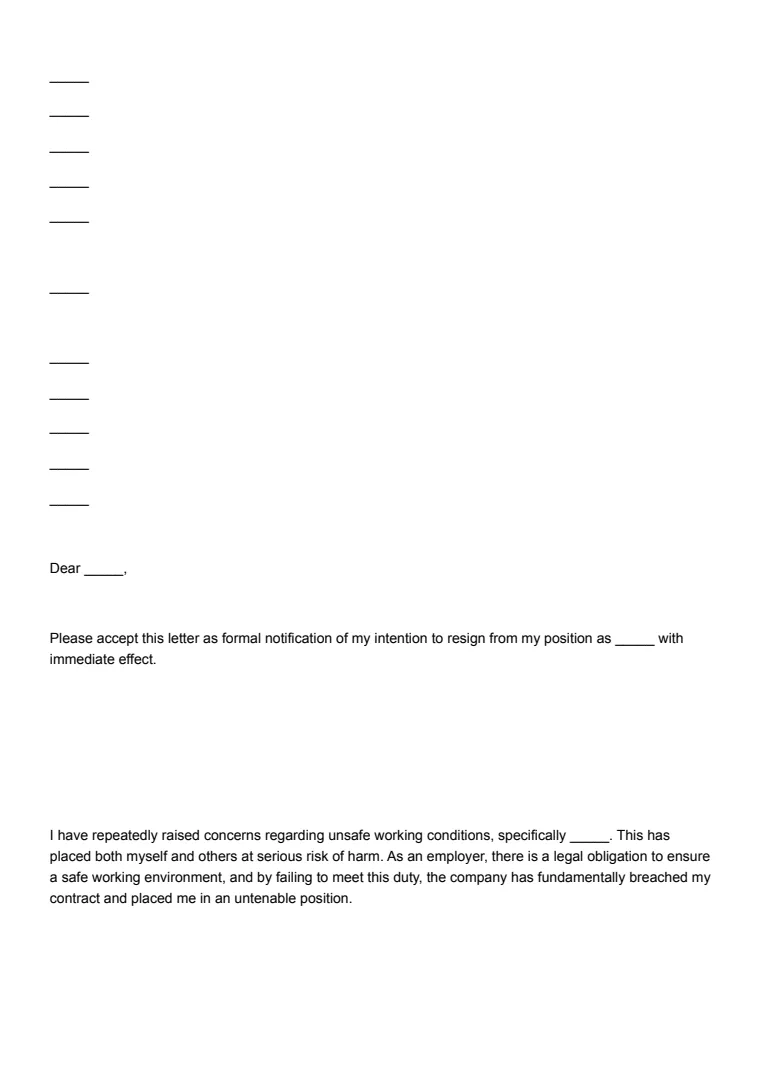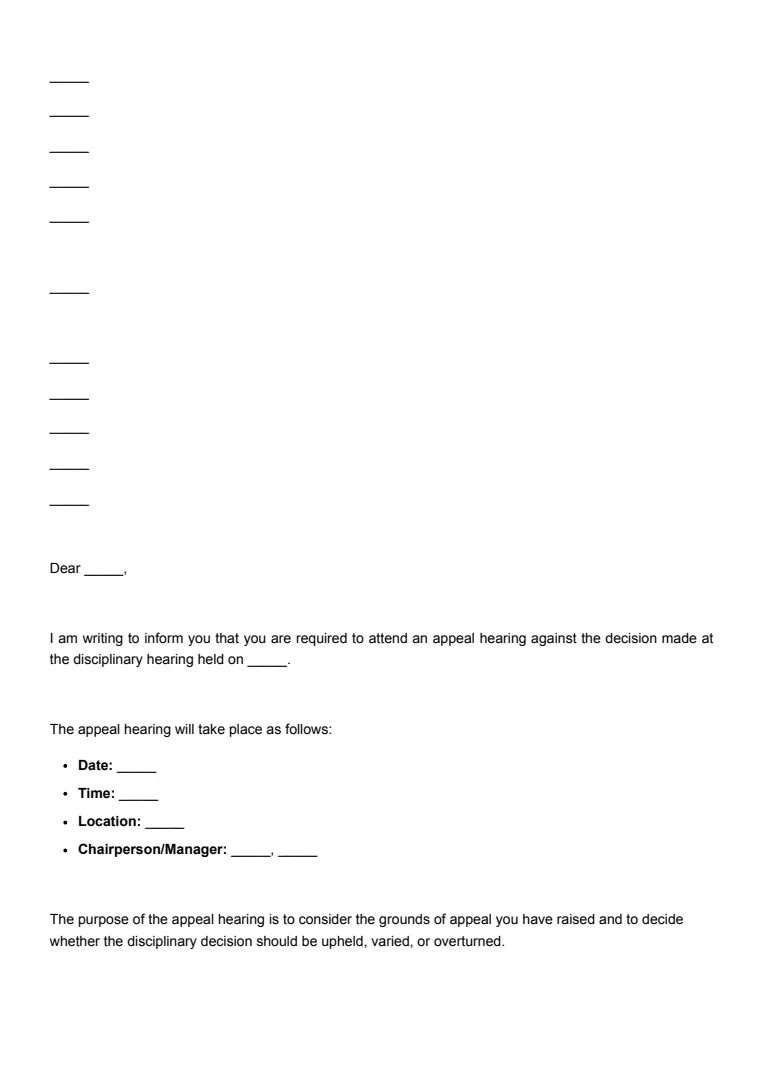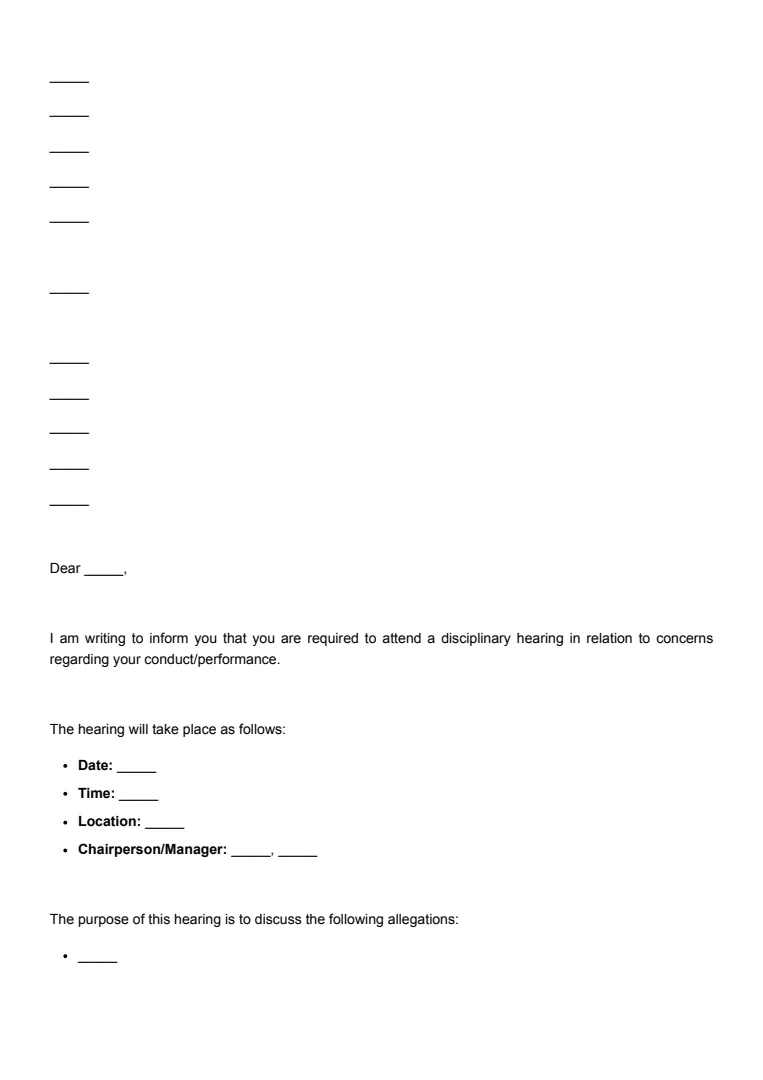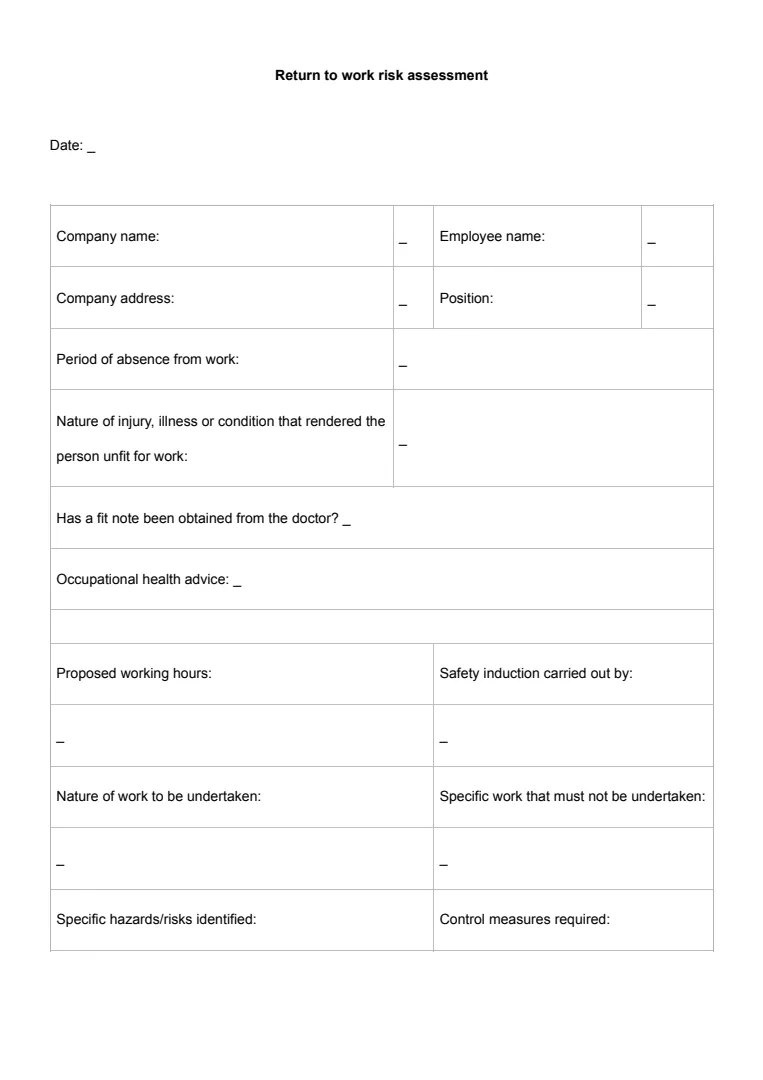What Is a Constructive Dismissal Letter?
A constructive dismissal letter is what you write when you believe your employer has seriously breached your employment contract, and you feel forced to resign because of it. You’re not just quitting because you want to; you’re leaving because your employer’s actions or behaviour have made your position untenable.
Common reasons for sending a constructive dismissal resignation letter include:
- Persistent bullying or harassment that isn’t addressed
- Sudden, unreasonable changes to your job duties or work hours
- Not being paid what you’re owed
- Being demoted without a valid reason
Legally, to claim constructive dismissal, you usually need to show that your employer committed a serious breach of contract, you resigned in response, and you didn’t delay too long before handing in your notice.
Your letter should be clear, specific, and mention the key incidents or breaches that led to your decision. This might include dates, brief details, or any previous conversations you've had with your manager or HR.
Writing a constructive dismissal letter is important because it acts as a formal notice and evidence if you later bring a claim. You’re setting out your reasons in writing, which is helpful if the situation escalates or you need to prove your case to an employment tribunal. You can use a constructive dismissal letter template to guide you.
Make your letter polite, factual, and stick to the facts; it’s about protecting your rights.
When Is a Constructive Dismissal Letter Needed?
You’ll need a constructive dismissal letter when you feel you have no choice but to resign because your employer has seriously breached your contract. This isn’t for minor issues; it's for situations where trust is broken, and staying has become impossible.
It's necessary if you're resigning due to things like bullying, sudden major changes to your role, non-payment, or unsafe working conditions.
If you feel forced to walk out because your employer’s actions leave you with no other reasonable option, this is when you use one.
Common signs of constructive dismissal are:
- Your job duties or pay are changed without your agreement.
- You’re facing harassment or discrimination that isn’t addressed.
- Health and safety rules are being ignored.
- You’re not being paid what you’re owed.
- You’re pressured to resign rather than being outright fired.
Resigning with a letter also helps create written evidence. This may be vital if you later claim constructive unfair dismissal, as it shows precisely why and when you left the job.
How to Write a Constructive Dismissal Letter
You can follow these steps if you need to write a constructive dismissal letter (or position untenable resignation letter).
Step 1: Maintain a Precise and Professional Tone
Writing a resignation letter for constructive dismissal requires precision and professionalism at every stage.
You should clearly state your intentions without including unnecessary detail or strong emotions.
Step 2: Start With a Proper Letter Heading
Set out your constructive dismissal resignation letter with a formal heading.
Include your contact details, the date, and your employer’s details at the top.
This ensures the document is properly formatted and easy to reference later.
Step 3: Open With a Direct Statement of Resignation
Begin your letter by addressing it to your line manager or HR.
Use a clear introduction such as: “I am writing to tender my resignation due to constructive dismissal.” Stating your purpose at the start removes any ambiguity.
Step 4: Explain the Reason for Resigning
Follow up with a summary of the circumstances that have led to your resignation.
Be specific about what happened and how it breached your employment contract. Focus on facts, not emotions, and use neutral, professional language.
Step 5: Reference Prior Complaints or Grievances
If you’ve raised these issues previously, refer to any formal communications, including dates or grievance reference numbers.
This helps support your position if the matter becomes subject to legal review.
Step 6: Clarify Your Notice Period and Final Working Day
State whether you are providing notice or resigning with immediate effect, depending on the severity of the situation.
Be clear about your last working day to avoid confusion.
Step 7: Request Final Pay and Other Practical Details
Request confirmation of your final salary, any unused holiday pay, and arrangements for returning any company property.
If you’d like a reference, you may politely request one here as well.
Step 8: End on a Professional Note and Keep Records
Maintain a respectful and professional tone throughout the letter.
Before sending it, ensure you have proof of delivery, for example, by email with a read receipt, or recorded post.
Always keep copies of everything you send and receive, as these may be essential if legal proceedings follow.
It’s a good idea to use a constructive dismissal resignation letter template to help guide you with the writing process.















